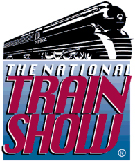but its getting done!


For the last couple of evenings I have returned to finishing off the trackwork. I admit, I have been procrastinating with this job because it is a bit on the tedious side. One of these days I will have to count just how many PC board ties I have soldered in place on this layout, several thousand I suspect.
The results are worth it though, the finished track sections are rock solid and will never move, very important with trackwork such as this.
The hinging technique for the points also seems to be working well. I can get two turnouts done in an evening.


Most of the missing PC board ties have been added in to these sections. I also finished off the curved track for the inner circle.

As I add in the missing ties, I also finish off the switch points, so the trackwork is fully completed and ready for the next phase of construction, which is cutting the rail gaps. I don’t want to cut the gaps until I am ready to install the track in place as it will become weak. I would love to get this done, so people will stop asking how I am going to do it!


A bit of progress. I think there are now 8 turnouts completed. The next section of trackwork consists of 8 more turnout points, so that should take a few more evenings.
I should have used Photoshop to remove that double chin in the first picture.
-T.
On to Next Section….
Finally Finalized
This is the second part to this post. To see the series in order, click the link and follow the “On to Next Section…” links to get back here.
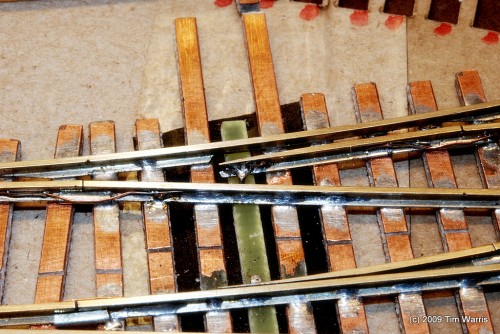
A few days ago (OK, 6 weeks) I started working on the throwbars for the turnouts. I have been playing with a few ideas on how to make them pivot as freely as possible considering the very short length of some of the switch points. Some will be less than 1″ long!
I decided to use a technique I developed several years ago and wrote about in one of our Fast Tracks Newsletters. This method uses a spike soldered to the switch point inserted into a hole in a PC board throwbar tie that has had the copper foil removed.
The advantage of this method is that there is no solid joint between the throwbars and the switch point, the only connection is between the switch point and the spike soldered to it. The spike is free to pivot int he throwbar. On most normal turnouts, this isn’t an issue as the solder joint is strong enough to overcome the stresses on it, but with very short points this will not work.
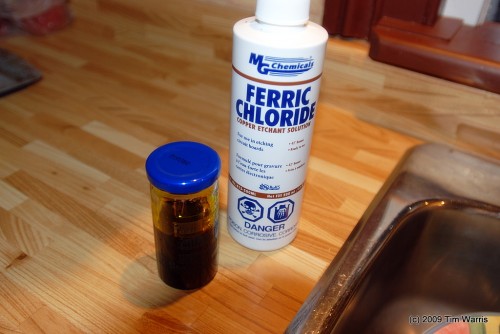
For all the tests I had just been removing the copper from the PC boards with a file, but that is a pain in the fingers. I decided to get some etchant (ferric chloride) and etch the PC board ties to remove all the copper foil. This will leave me with a supply of nice throwbar material.
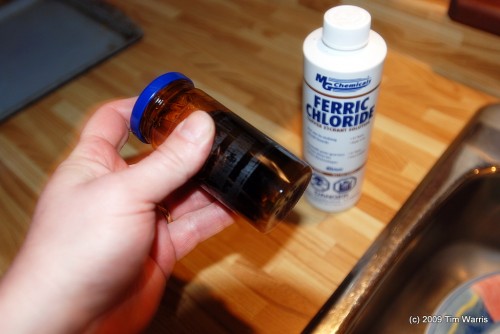
About 50 ties were placed into a glass jar with the etchant. Shaking it speeds up the process.
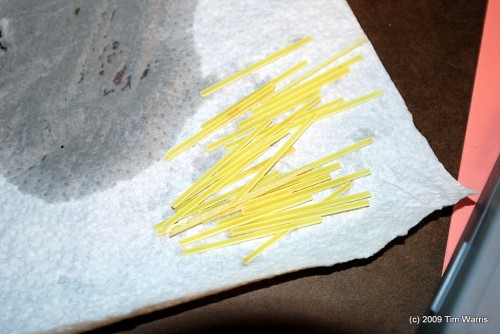
Ferric chloride is very aggressive, this only took a few minutes. This stuff is nasty, so I chose not to drink it.
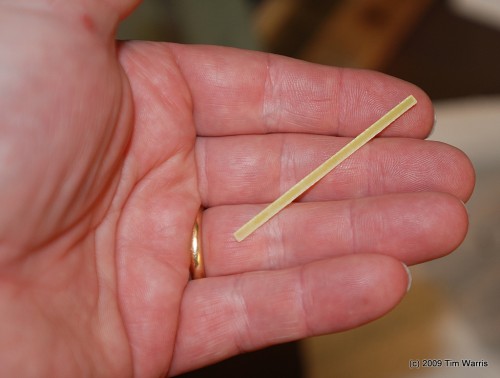
The result is a nice material suitable for a throwbar.
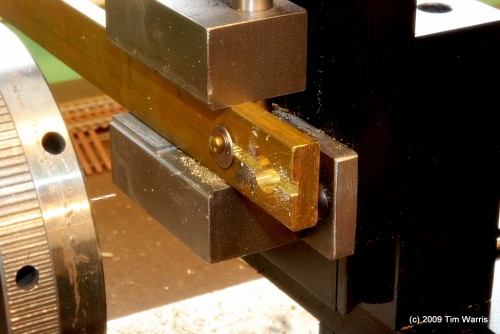
The key to success with this technique is to have holes drilled in the throwbar that are as square to the points as possible. This will eliminate any stress on the solder joints.
To achieve this I made a crude but effective jig in my lathe to hold the throwbar square to the drill.
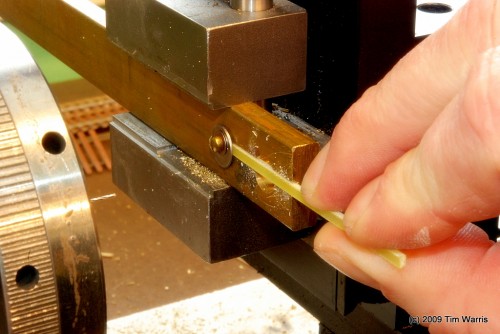
The throwbar is simply slid into the groove in the jig and held in place by hand while the holes are drilled. First, the holes are located with a centre drill, then drilled through with a small bit.
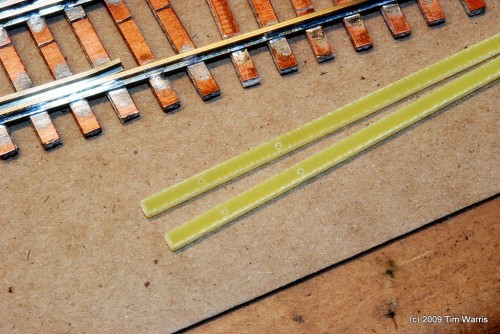
The results are holes that are accurately spaced, and square to the surface. The distance between the holes is .465″, which opens up the points a bit more than normal. Any less and the wheels will catch the open point of these very small radius curved turnouts.
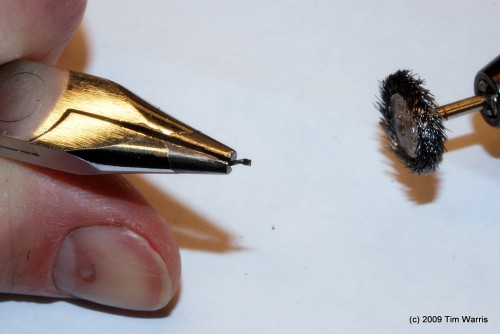
Next I prepared a spike. To solder to a Micro Engineering (30-106) spike the blackening HAS to be removed. Solder will not stick properly to blackened surfaces. I use a wire wheel in my Dremel tool to quickly remove the blackening from the spike. This works very well and leaves a nicely polished surface suitable for soldering.
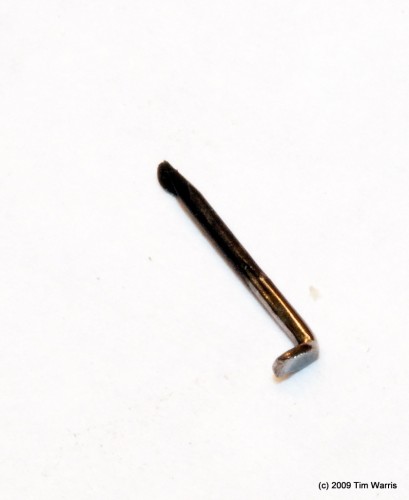
Only the top of the spike needs to have the blackening removed, the rest of the spike will be trimmed flush with the bottom of the throwbar tie.
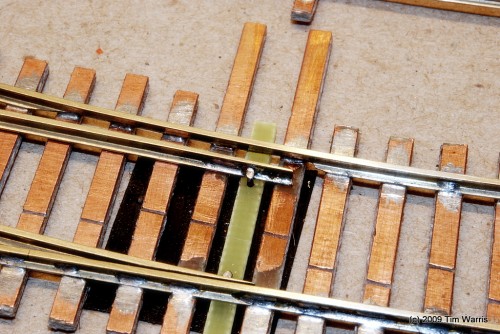
The spike is inserted into the hole in the throwbar and trimmed flush with the bottom of the throwbar, then removed.
The throwbar is then put into position between the head ties, the spike re-inserted down into the hole and soldered in place to the switch point. It is easy to adjust and position the throwbar by remelting the solder joint and siding the throwbar into position.
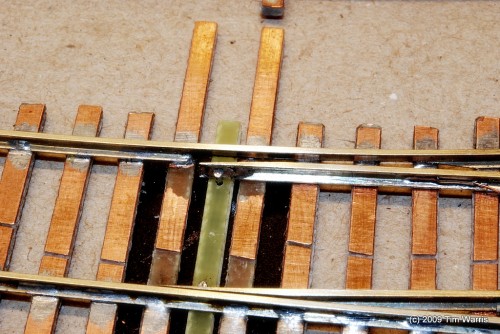
Once complete, the throwbar moves very freely with the switch points pivoting at the spikes and rail joiners.

Small wire jumpers are added between the closure rails and the switch points to feed power to the points reliably.
This seems to work very well and I will proceed with this technique for the rest of the turnouts on the layout. I like this method, and believe it will be reliable as there is very little stress on the solder joints, the main purpose of the solder joint is to pull the points back open, when closing the points the pressure should be on the spike itself pressing against the switch point. With minimal clearance in the holes in the throwbar there is little to no twisting being applied to the solder joint. Thats the theory anyway, it is still untested under any kind of use.
Three down, 24 to go…
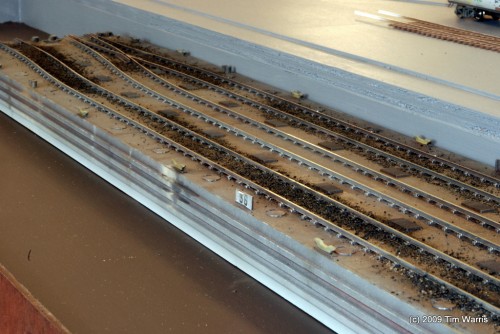
and for no reason at all, a picture of the carfloat.
-T.
On to Next Section..
Hamilton, Ontario, May 16, 17, 18
This weekend the Canadian Association of Railway Modelers will be hosting their 5th annual National Convention in Hamilton Ontario. Part of the convention is a Train Show on Sunday, which Fast Tracks will be attending. I will also be setting up the Bronx Terminal layout there. If you come be sure to drop by and say hi!
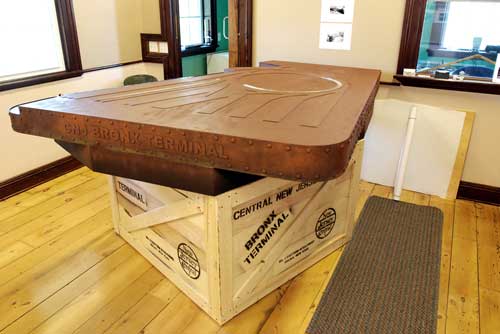
I have added roadbed to the layout and painted the top surface brown, which makes taking pictures of it easier as all that yellow on the walls, floor, crate and plywood top made getting the colours right difficult. The brown tones it down quite a bit. All that will eventually be covered with scenery, but I expect it may be a while before that happens as I have lots of track to install and wire first.
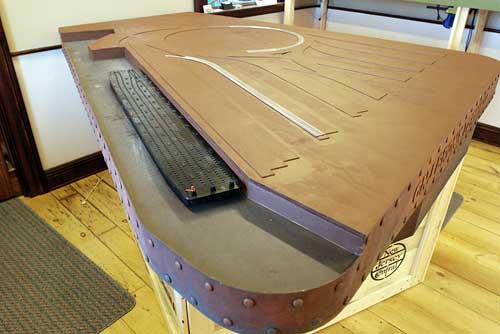
You might as well come to the train show on Sunday, its going to rain all weekend anyway.
-T.






















